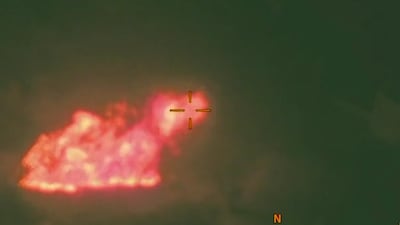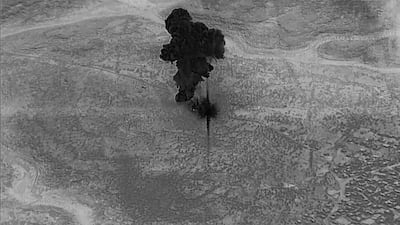After an operation to locate and kill ISIS leader Abu Bakr Al Baghdadi ended with the so-called “caliph” blowing himself up in his heavily fortified safe house on October 26, the United States is faced with another elusive task of unmasking the terror group’s new leader.
Shortly after ISIS confirmed Baghdadi’s death and announced his successor last Thursday, US President Donald Trump tweeted: “ISIS has a new leader. We know exactly who he is!”
That, however, does not seem to be the case. Recent reports indicate that Iraqi, Kurdish and American officials say they don’t have much to go on.
Publically almost nothing is known of Mr Baghdadi's successor, other than his nom de guerre, Abu Ibrahim Al Hashimi Al Qurashi. Even this, analysts have noted, isn't much of a start.
Daniele Raineri, an Italian journalist and analyst, noted that the names of senior figures in the terror group often change – sometimes entirely – when they are elevated to a new rank.
Given that Qurashi may have had a different name the day before his appointment, “[It] might be difficult to understand if we already know him,” Mr Raineri said.
As terrorism analyst Paul Cruickshank put it: “Nobody – and I mean nobody outside a likely very small circle within ISIS – have any idea who their new leader ‘Abu Ibrahim Al Hashimi Al Qurashi’ is.”
US officials have said they are working to change that.
Shortly after ISIS announced Baghdadi’s successor in a recording published on the encrypted Telegram messaging channel, Nathan Sales, the US Counter-Terrorism coordinator said Washington was investigating who Qurashi is and his previous roles in the organisation.
“Any time there is a leadership transition in the terrorist organization, we want to make sure that we have the latest information that we need to have to confront the threat,” he told reporters last week.
Prior to the US Special Forces operation in the northern Idlib province that ended in Baghdadi blowing himself up, there had been a favourite to take over from the ISIS leader.
However, Abu Hassan Al Muhajir, Baghdadi’s spokesperson, was killed in a separate US operation on the same day.
According to Aron Lund, a Middle East analyst, it's likely that Qurashi is Iraqi like most of the group’s previous leaders.
Another clue that Mr Baghdadi’s successor is Iraqi comes from the Telegram voice memo that noted that he had previously fought against American forces.
The new ISIS leader’s last name suggests he is being portrayed as a descendant of the Quraish tribe, belonging to the Prophet Mohammad.
The terror group sees this lineage as mandatory for becoming the leader of their self-declared “caliphate”.
Baghdadi oversaw ISIS’s lightning takeover of swathes of Iraq and Syria, ultimately announcing the establishment of the proto-state in Mosul on July 4.
His tenure saw the terror group carry out brutal executions of civilians and enslavement of entire religious minorities.
Regardless of who Qurashi is or how he makes his mark on the terror group, US officials have said ISIS remains a national security priority.
“We will dismantle the group regardless of who its leadership cadre is,” Mr Sales promised.








